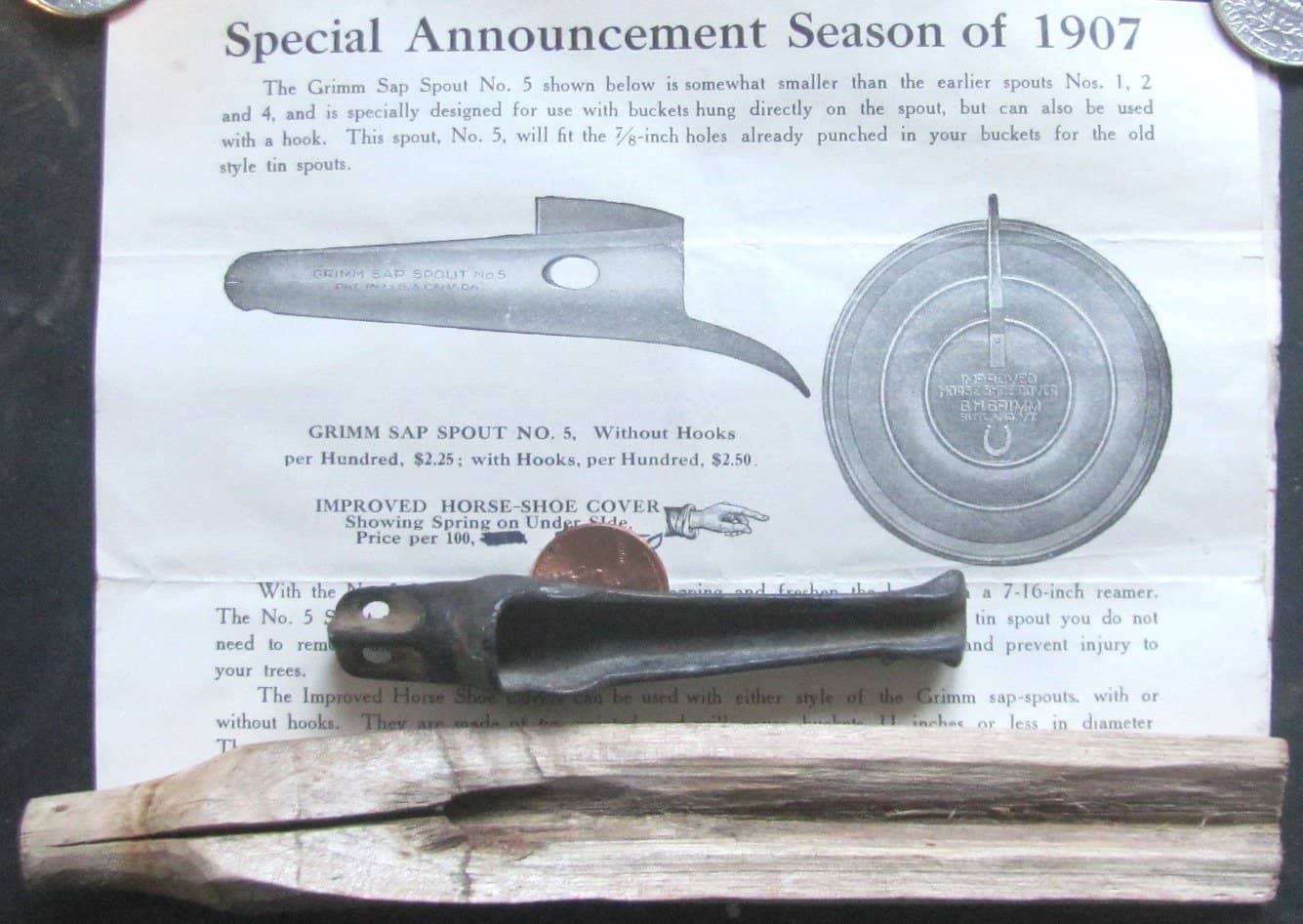
I met many farmers when buying antiques in the 70s. Visiting a farmer on antiques business had to wait ‘til between seasons. Spring was planting crops, summer haying, and harvest in the fall. Don’t bother them then, I learned. This was their business.
Several farmers told me about their off season, winter. There was less to do after chores were completed. Many of these farmers produced maple syrup to sell. It was another cash crop. More than one told me they produced enough syrup to pay their taxes.
Maple sugar
Today the bulk of syrup produced is just that, syrup. A small amount of maple sugar is produced, often made in the form of a maple leaf. But this has not always been the case. Maple sugar is boiled longer and then poured into a form.
In the old days it was poured into one quart or larger tin cans. These tins sometimes had the producer’s name on the front of the tin. Farmers shipped sugar in wooden crates via the railroad. Maple sugar could now be enjoyed in the city.
Sugar devil
One day years ago, I was buying antiques from an old farmer on Route 22A. I picked up a strange tool. I didn’t know what it was. It was somewhat similar to the old hand augers used to bore holes in timbers. But instead of an auger on the business end it had an unusual coil tip.
The turned wooden handle was about 16 inches long. An iron rod, maybe a half-inch in diameter, passed through the center of the wooden handle forming a T, and held in place with a nut. Near the business end, maybe four inches up from the tip, a blacksmith split the half-inch iron into three arms. Each arm was twisted in a spiral shape, forming a coil. This affair was about two inches in diameter. The ends of each arm were sharpened.
Most of us know how brown sugar sets up hard when left unused. The same is true with maple sugar in five gallon pails. When it set up, the sugar devil was used to break up the sugar. Place on top of the sugar, bear down and turn the handle. The sharpened arms would dig in and break up the sugar into manageable pieces.
During WWII sugar was rationed in this country. Maple sugar helped fill this void.
Sap spouts
The earliest spouts I’m aware of were made from sumac. My father showed me how to make them. Select a sumac branch maybe a half-inch in diameter. Cut in four-inch lengths. Place a length in a vise, but not too tight or you’ll crack it. Then with a piece of coat hanger, run it through the length of the spout. The pith in the center is very soft and easily pushed out the other end. Remove the bark with a knife and cut a little chamfer on the end to be inserted in the hole in the tree. Presto, sap spouts. We also made flutes.
Many years ago I bought a basket full of sumac spouts. I kept a few because they were different. Some are 10 inches long. I asked why and was told in the old days buckets were not hung on the tree, but placed on the ground, so longer spouts were needed.
Cast iron spouts
In the late 1800s manufacturers began producing cast iron spouts of many different forms. Each was trying to invent the “better mouse trap.” There are hundreds of varieties.
The photo
The photo with this article shows a seven-inch long sumac spout, a three-inch cast iron spout with patent date 1875, and a 1907 Grimm Rutland, Vt. brochure.
Grimm manufactured and sold spouts, buckets and covers, syrup cans, and evaporators. Metal spouts were $2.25 per hundred. Metal pail covers were $6.50 per hundred. Sap buckets were $25 per hundred.
They say of their syrup cans: “THE GRIMM SYRUP CANS are made of I C BRIGHT CHARCOAL TIN. Screw caps are lined with genuine velvet cork of best quality. The tin is full weight and the cans are honest measure.”
This week’s old saying refers to which wind direction sap runs the best: “East is least. West is best.”